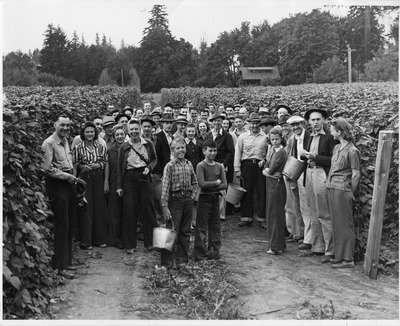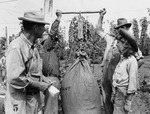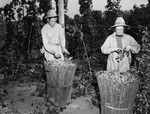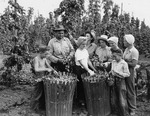View images of Workers in Other Categories
While the Emergency Farm Labor Service had some programs with very specific requirements regarding those who could join, such as the Victory Farm Volunteers or the Women’s Land Army, that did not stop a variety of people from joining the effort under different auspices. Men and women would frequently come to the fields for shorter, evening shifts after their fill-time, day jobs regardless of their employer. Occasionally, employers would even shut down their businesses for a day and the entire compliment of employees would work on the fields instead. Although these laborers worked far fewer hours than the day workers, they played a pivotal role, filling-in where manpower was lacking.
In addition to those coming to the fields after work, many would travel to agricultural areas during their vacations, while some would stay the entirety of the harvesting season. On occasion, these vacationing laborers would bring their families, providing the farm with several workers that might not have been able to make it otherwise. Interestingly, this is the category of laborer that tended to have the greatest age range, as both children and the elderly frequently fell under this grouping.
Unlike their vacationing contemporaries, migrant and iterant workers from around the country came to Oregon to work with the Emergency Farm Labor Service with the intent of staying for a longer period of time. The majority of the housing provided by the Emergency Farm Labor Service was utilized by these migrant workers, in addition to the Braceros and other international workers, although it often provided them will little more than a roof and the ability to practice the most basic hygiene.






